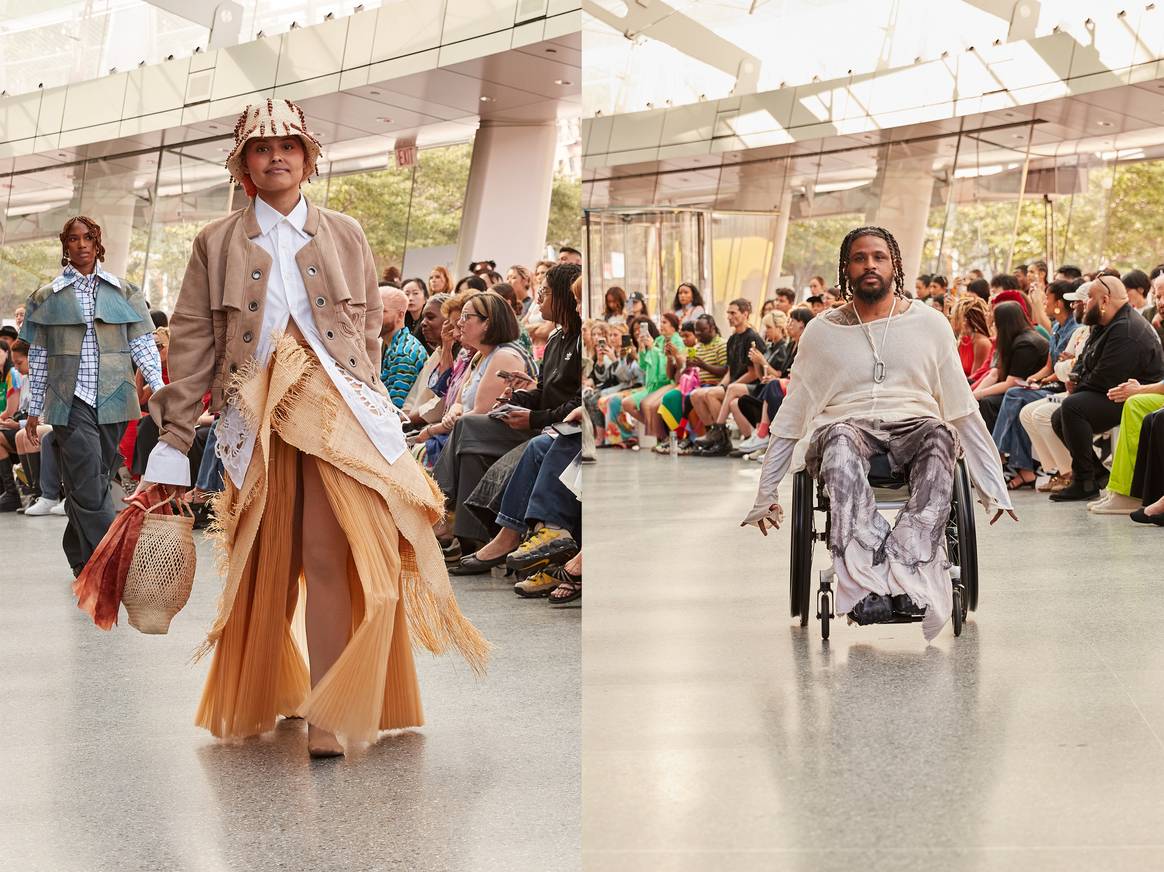Engaged in the clothing industry for 20 years.

FIT and Parsons MFA runways during NYFW represent two diverging paths of study
On successive days during NYFW the two major New York City fashion schools presented their
MFA student collections on the official schedule, and were the only schools to do so.
Unveiling their graduate collections were fourteen designers from the Fashion Institute of
Technology, a public institution and part of the State University of New York, and fifteen from
Parsons School of Design, a private university and part of The New School. Both institutions are among the premier fashion programs in the US, and both have built a formidable reputation globally. The runways reflect the culmination of two years of intense creative development and experimentation for the students and also represent to some extent their last hurrah before they enter professional life.

FIT chose to show at downtown Manhattan’s Spring Studios, the main hub for NYFW’s runway shows and ancillary activities, the slick white runway the same as that used for the previous show by eveningwear designer Pamella Roland who has been a NYFW mainstay for over 20 years. Geographically, if not symbolically, FIT had already placed the students’ collections within the context of the city’s design industry.
Parsons chose the location of the Brooklyn Museum, the city’s second largest art museum and one of the city’s designated landmarks, showcasing its student collections within the lofty glass-clad entrance and using its exposed brick arches to dramatic effect. In ensuring that fashion occupies the same space as globally recognized art collections, even works that have created controversy such as Chris Ofili’s 1999 showing of The Holy Virgin Mary, we are perhaps being invited to view a more anti-establishment vision of the future of fashion.

Either way, attendees are guaranteed a unique opportunity to understand how those who will be shaping our industry and attempting to make sense of the many challenges associated with a career in fashion will approach the task. The focus on sustainability is perhaps nowhere as strong as within our fashion programs and that can result in satisfyingly unexpected encounters of material and form. While the collections were artfully conceived and beautifully executed, at the risk of generalizing, many seemed to transmit a sense of isolation and confusion, whether with a glossy simplicity per some of the FIT looks or in a more adhoc and feral state from Parsons.

Crinolines, inflatables, and spheres on FIT and Parsons MFA runways
“Uni/versal,” the title of FIT’s show, according to the show notes, “best represents our individuality as well as our cohesiveness. Each of us has a unique creative universe that brings inspiration to all of us.” The show opened with the collection from Lilach Porges of architectural garments created using a robotic arm and featuring hand-made textures painstakingly rendered using a 3D printing pen, the initial look worn by a model gliding down the runway on a Segway. Veiled and sheathed structures were commonalities of several of the collections that followed, as exemplified in Luna Zining Ye’s layers of interplaying black-contoured organza followed by a model entirely captured inside an upright pleated funnel almost as if she had flipped her crinoline upside down.

A recurring feature of discs, balls, and spheres was also in plentiful evidence. Vasundra Dhamija put models inside bright transparent globes or threaded arms through plisse cylinders, exploring the shape of energy fields and the construction of toroidal forms. Youna Jin carved intriguingly positioned circles out of body-con leotards then affixed satellite shapes onto the body; while Kuai Li’s elongated rigid structures gave models the appearance of neon paragliders elegantly descending onto the runway. In the midst of this restraint and geometry, Valeria Watson’s hand-woven ribbons, photographic prints, cowboy boots and traditional Mexican embroidery were a joyful surprise.

Parsons MFA in Fashion Design and Society was entitled “We Dem Kids” and the most immediate reflection of this was the diversity on the runway, no doubt a result of the efforts of Ben Barry who has defined his mission to center the intersectional fashion experiences of disabled, fat, trans and queer people in design education since his arrival as Dean in 2021. Influenced by her background and incorporating raffia craft, Fabiola Soavelo merged minimalism from her Swiss culture with the historical and natural essence of her Malagasy heritage, her designs reflecting how colonialism and African roots shape body perceptions. Romanian Lauren Pipenco tapped into the post-communist experience and immigrant struggle for identity, acceptance, and community to create a collection that appeared to be literally stuffed with scraps of memories and stories so that some of the garments ballooned away from the body.

Dominican in NYC, Yamil Arbaje addressed Latin American masculinity and youth culture in oversized blazers, baggy pants and bright geometric knits. Ying Kong playfully crafted pieces that explore the dynamic space where clothing intersects with the body incorporating zippers that curve and knitwear that highlights anatomical features. Inflatables turned out to be a feature of several collections and Yu Gong’s combination of traditional garment construction methods with 3D modeling software, conjuring up garments that bridge the physical and digital worlds, possessed surreal charm.

Both schools have presented different outcomes to answer the question of a designer’s role in the industry and in society today. But the institution can only shape the designer to a certain point and then the student’s research, practice, ambition and determination take over. How best to impact change and remain authentic while realizing one’s creativity and paying off student debt is one of the toughest conundrums for NYC’s fashion graduates. Somehow, the solitary sound of the saxophone played live by musician Marvin Carter as the last look left the Parsons runway seemed to sum up the road ahead for today’s graduates better than anything I could ever put into words.


